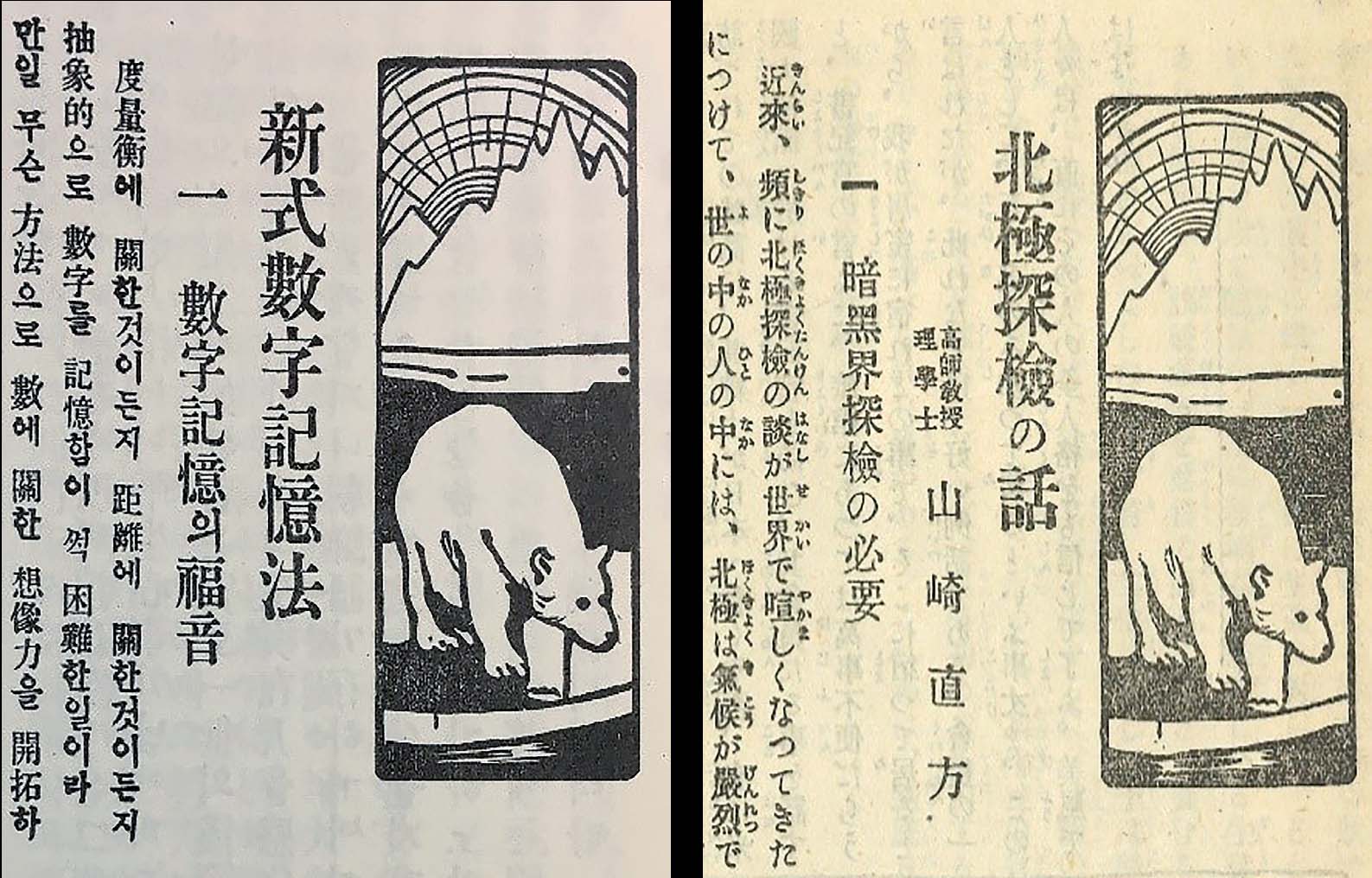Aspects of Japanese publication translations in Sinmunkwan’s magazines
Sinmunkwan (新文館) was a publishing company established in Seoul in 1908 by Choe Nam-seon (1890-1957), one of the key intellectuals of modern Korea. It gained prominence as the publishing house of Sonyeon (少年) (November 1908 – May 1911), considered to be Korea’s first modern magazine, and Cheongchun (靑春) (October 1914 – September 1918), a comprehensive cultural magazine that was popular in the 1910s. Featured in these two Korean magazines were numerous translations of Japanese publications. An analysis of these translations sheds light on the nature of Sinmunkwan’s relationship at the time with the Japanese publishing sector.
In Sonyeon, many of the Korean translations of western works were based upon the Japanese translations of the original texts. Key characteristics of the Korean translations featured in Sonyeon are the addition of explanatory comments and the tailoring of expressions for the Korean audience. For example, Choe Nam-seon added explanations about historical figures (such as the Macedonian King Alexander, the philosopher Francis Bacon), as well as on western concepts such as ‘materialism’ and ‘the Reverend’. In addition, he paraphrased ‘exemplary man’ into yangban (a term referring to the traditional ruling class or gentry of Korea during the Joseon Dynasty) so that the translation may be understood within the Korean cultural context.
Another characteristic feature of the translations in Sonyeon is the revision of the text so that ‘boys’ – the magazine’s readership (sonyeon means ‘boy’ in Korean) – are addressed directly and the expectations for these ‘boys’ are clearly expressed. One example would be the addition of the following sentence at the end of the article ‘The Youth of Edison, the King of Electricity’ [電氣王애듸손의少年時節] to express an expectation for these ‘boys’: “We wish to know what kinds of trees and eggs of invention are being fostered and hatched in the future in Korea” [新大韓에는 어떠한 発明의 나무가 자라가고 알이 깨여가는가를 알고자하오].
In the case of Cheongchun, a magazine in which pieces on ‘global knowledge’ featured prominently, the material for many of the pieces was obtained by translating numerous Japanese publications, such as Taiyo (太陽) and Chugaku Sekai (中學世界), published by Hakubunkan (博文館), or Gakusei (學生), published by Fuzanbo (冨山房). An analysis of the translations that appear in these magazines reveals that attempts were made to situate Korea within the global context substituting ‘Korea’ for ‘Japan’. For example, ‘Ueno Zoo in Tokyo’ was replaced by ‘Changdeokgung Zoo’, ‘Tokyo’ by ‘Gyeongseong’ and ‘Kyoto’ by ‘Pyeongyang’.

Fig 1: Images from Chugaku Sekai (中學世界) Issue 13-1 (published in January 1910) (right) and Cheongchun (靑春) Issue 1 (published in October 1914) (left). In this case (and other similar cases), the article itself was not translated but the illustrations or layouts of Japanese texts regarding world topics or events were referenced. Images of the original articles scanned by the author.
The paraphrasing of expressions to align with Korean culture or the presentation of Korea as the ‘subject’ through the replacement of terms can also be observed in the children’s magazines published by Sinmunkwan in the period between the final publication of Sonyeon and the first issue of Cheongchun, such as Bulgun Jeogori (붉은저고리), Aideulboi (아이들보이) and Saebyeol (새별). For instance, 太郎さん (Taro-san) from the original text is translated as ‘friend’ and 大名 (daimyo) as yangban.
Sinmunkwan’s magazines for children are also notable for the fact that they were printed mostly in Hangul, the likely reason for this being the preservation of the Korean language at the time of Japanese colonial occupation. Purely Korean expressions were used as much as possible, with great effort being made to avoid the use of Chinese characters. Examples of this include the way in which naruneun teul (나르는 틀), an expression meaning ‘a flying machine’ that uses only Hangul characters, was used instead of bihaenggi (飛行機), the more generally used term to translate ‘airplane’, but which is comprised of Chinese characters. Another such case is the use of jeollo ganeun soore (절로가는수레), meaning ‘wagon that goes on its own’ instead of jadongcha (自動車) for ‘automobile’. Indeed, Choe Nam-seon urges the readers of Aidle Boi to “make sure to write in Korean” for correspondence. The creation of Korean expressions in the process of translation went hand in hand with his attempts to preserve a pure version of the Korean language that did not depend on Chinese characters.
As the above example of Choe Nam-seon’s translation of various Japanese publications and the publication of these translations in the magazines produced by his publication house, Sinmunkwan, illustrates, ‘translation’ was not merely the act of transferring a text from one language to another, but also involved active attempts to enlighten the people or to preserve culture.
Tanaka Mika, Ph.D. Candidate, Kyushu University mikatanaka35@gmail.com